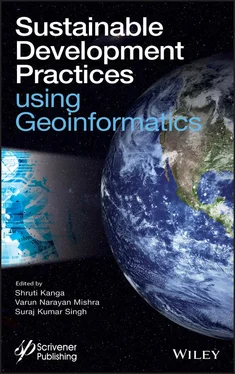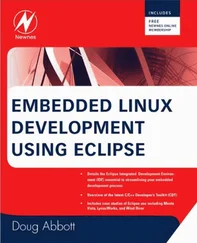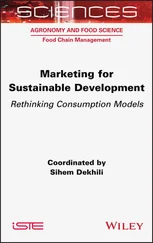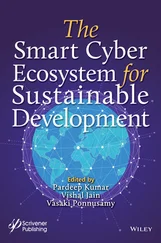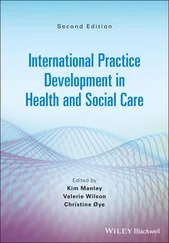In Chapter 11, water is an essential natural resource for human being. The adequate supply of water is of highest importance for survival. In this paper, water audit has been attempted for the campus of Birla institute of Technology, Mesra, Ranchi with case studies of two hostels. The water audit is assessed lobby wise to conclude the gaps. Water harvesting potentials was assessed for the study area, and recommendations were made for water management and planning.
In Chapter 12, this study is conducted to analyze LULC changes during the period of 2006 to 2017 in Durg block of Chhattisgarh state, India using multi-temporal Landsat satellite imageries. Thematic layers and maps for the year of 2005 and 2016 (post-monsoon) and 2006 and 2017 (pre-monsoon) are prepared. A map is generated for LULC change analysis with the help of the intersection tool. The LULC categories showed changing patterns during the period. This type of study can be very useful for policy makers and planners for the management of land resources.
In Chapter 13, this study attempts to apply livelihood vulnerability index (LVI) for the assessment of the livelihood risks of the vulnerable communities because of climate change. The socio-economic vulnerabilities suggested by IPCC’s three contributing factors such as exposure, sensitivity, and adaptive capacity of the region are taken into consideration. The study revealed that livelihood options in the region are limited and mainly dependent on agriculture and labor sector. The communities in the region are highly vulnerable due to changing climatic conditions.
In Chapter 14, this work is carried out for suitable site selection for the sustainable urban groundwater management in the Dhanbad Block in Jharkhand state, India. Different datasets such as Landsat 8 satellite image, DEM, Toposheet, and secondary data are used in this study. It facilitated to know the complexities of a dynamic phenomenon like suitability site sustainable water management, land use/land cover benefits, and urban development planning pattern. The weights have been assigned to different layers as per the need for the acceptable site selection for the sustainable groundwater management planning.
In Chapter 15, this paper presents a study to detect changes in land use and land cover over a period of 30 years from 1988 to 2018 in the Kamrup district of Assam, India. Multi-temporal Landsat satellite images of year 1988, 1998, 2008, and 2018 are used in this study. The images are classified into different categories using visual interpretation and manual digitization methods. The change matrix approach is used for evaluating the net loss and gain of different land use and land cover classes. This study can be useful for sustainable urban management and land use planning in the region.
In Chapter 16, on May 03, 2019, a rare summer cyclone named “ Fani ” hit Puri, a small coastal town of Odisha, India. This cyclone resulted into the loss of 64 human lives and affected about 16.5 million people in 18,388 villages of the entire state. It also severely affected power, telecommunication infrastructure, and road services. The damage to housing has been extensive, particularly in the Puri district of Odisha. This examines how climate resilient houses with “Build Back Better” features can save valuable human lives through use of eco-friendly, durable, cost effective, and non-pollutant building materials.
In Chapter 17, disasters resulting in substantial loss of deaths, disruption of normal life, and the developmental process for years to come. This paper systematically describes the application Geoinformatics technique for disaster management. It has robust data handling capabilities that is ideal for disaster risk reduction, mitigation, and management from global to local scales. This technique is capable to create awareness to dissemination of information during disaster mitigation, preparedness, and response as part of disaster management measures.
In Chapter 18, the food processing industries play a key role in economic development of any country. This work analyzes the locational factors how favored in rice mill clustering in Ernakulam district, Kerala state, India. The environmental concerns were identified through field and house hold survey in the select areas or panchayats of Kalady, Okkal, and Koovappady. The physio-chemical analysis of waste water effluent carried out revealed the organic and inorganic presence of the pollutants and its extent.
In Chapter 19, this study demonstrates the importance of the Digital Elevation Model (DEM) and satellite images for evaluation of drainage and extraction of their relative parameters for the Wainganga River watershed area of the Godavari River, India. Several hydrological parameters including drainage analysis, topographic parameters, and land use patterns were evaluated and interpreted. The climatic condition based on hydrological investigation, of the basin is characterized by hot summer from March to May followed by a rainy season from June to September using.
This edited book entitled “Sustainable Development Practices Using Geoinformatics” contains chapters written by prominent researchers and experts. The key focus of this edited book entitled “Sustainable Development Practices Using Geoinformatics” is to replenish the available resources on the topic by integrating the concepts, theories, and experiences of the experts and professionals in this field.
The completion of this edited book entitled “Sustainable Development Practices Using Geoinformatics” could not have been possible without the grace of almighty God.
We are grateful to Hon’ble Sunil Sharma, Chairperson, Suresh Gyan Vihar University, Jaipur for his encouragement and support. The words cannot express our indebtedness to Hon’ble Dr. Sudhanshu, Chief Mentor, Suresh Gyan Vihar University, Jaipur for his continuous guidance, expert suggestions and motivation during the completion of this edited book.
Special thanks are due to all the reviewers for their time to review the chapters. The editors would like to express heartfelt gratitude to all the members of editorial advisory board for their endless support and valuable instructions at all stages of the preparation of this edited book. We would like to mention the names of the members of editorial advisory board as Prof. M. S. Nathawat, IGNOU New Delhi, India; Dr. (Mrs) Tapati Banerjee, NATMO, Kolkata, India; Prof. Milap Punia, JNU, New Delhi, India; Prof. Rajendra Prasad, IIT (BHU), Varanasi, India; Dr. Devendra Pradhan, IMD, Government of India, New Delhi, India; Prof. Manoj K. Pandit, University of Rajasthan, Jaipur, India, Dr. Snehmani, SASE, DRDO, Chandigarh, India, Prof. Shakeel Ahmed, Jamia Millia Islamia, New Delhi, India; Prof. Suresh Prasad Singh, Himalayan University, Itanagar, India; Mr. Peeyush Gupta, NMCG, Ministry of Jal Shakti, Government of India, New Delhi, India
To all the colleagues, friends, and relatives who in one way or another shared their constant and moral support. The editors are eternally thankfully to Scrivener Publishing for giving the opportunity to publish with them.
Dr. Shruti KangaDr. Varun Narayan MishraDr. Suraj Kumar SinghEditors June 2020
1
The Impact of Rapid Urbanization on Vegetation Cover and Land Surface Temperature in Barasat Municipal Area
Aniruddha Debnath, Ritesh Kumar*, Taniya Singh and Ravindra Prawasi
Haryana Space Applications Centre, Hisar, Haryana, India
Abstract
India is a developing country and its growing phase is facing the trio of urbanization, modernization, and globalization. The study pertains to find out the impacts of rapid urban development on vegetation cover and its inter-relationship with the variability of Land Surface Temperature (LST). The study area, Barasat municipality, is facing rapid urbanization since mid of 1990s; hence, the number of people residing in Barasat is increasing rapidly, resulting in dense, concrete, and high-rise buildings. The Barasat city is adjacent to Kolkata metropolitan city and is a part of Greater Kolkata. Therefore, there is escalation in number of multi-storied buildings along with proliferating population leading to urban sprawl in the study area. These facts promote Barasat to be an Urban Heat Island (UHI). The study aims to show the change in variability of surface temperature from 2001 to 2017 with the help of geospatial techniques and using Landsat data of multiple dates in order to uncover the modification/variation in the urbanization and then correlate it with NDVI (Normalized Difference Vegetation Index), and LST. The 17 years’ time scale is very small period for change detection of urban land use change but enough to show the urban growth and its pattern and trend in relation to surface temperature variation. The remote sensing and GIS provides very useful tool for the analysis of changes in environmental condition due to human activity in the study area.
Читать дальше
